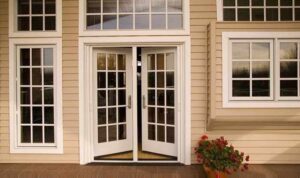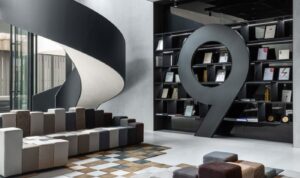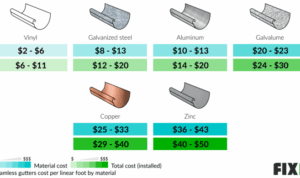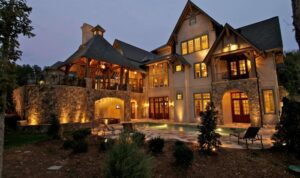Delving into the world of Scandinavian interior design, where simplicity meets functionality to create inviting spaces that exude warmth and charm. From clean lines to natural elements, this design style embraces a minimalist approach while incorporating nature-inspired elements for a harmonious living environment.
Characteristics of Scandinavian Interior Design
Scandinavian interior design is known for its simplicity, minimalism, and functionality. It focuses on creating a cozy, inviting atmosphere while emphasizing clean lines and a sense of openness.
Key Elements of Scandinavian Interior Design
- Neutral Color Palette: Scandinavian interiors often feature a neutral color scheme with white, gray, and beige tones. These colors help create a sense of light and space in the room.
- Natural Materials: Wood is a key element in Scandinavian design, bringing warmth and texture to the space. Other natural materials like stone and leather are also commonly used.
- Functional Furniture: Scandinavian design prioritizes functionality and practicality. Furniture pieces are often simple, with clean lines and multifunctional features.
- Minimalist Decor: Clutter is kept to a minimum in Scandinavian interiors, with a focus on sleek, uncluttered spaces. Decorative elements are thoughtfully chosen to enhance the overall aesthetic.
Color Palette in Scandinavian Interiors
The color palette in Scandinavian interiors is typically light and airy, with an emphasis on whites, grays, and muted tones. These colors help reflect natural light and create a sense of calm and tranquility in the space.
Importance of Natural Light
Natural light plays a crucial role in Scandinavian design, as the region experiences long, dark winters. Large windows, light curtains, and reflective surfaces are used to maximize natural light and create a bright, welcoming environment.
Minimalist and Functional Furniture
Scandinavian design values practicality and simplicity when it comes to furniture. Pieces are often sleek, with clean lines and minimal embellishments. Multi-functional furniture is common, helping to maximize space in smaller homes.
Materials and Textures in Scandinavian Interior Design

Scandinavian interior design is known for its use of natural materials and textures that create a cozy and inviting atmosphere in living spaces.
Common Materials Used in Scandinavian Interiors
In Scandinavian interior design, the use of natural materials is key to achieving the minimalist and functional aesthetic. Common materials include:
- Wood: Light wood tones such as pine, birch, and oak are frequently used for furniture, flooring, and accents.
- Leather: Leather upholstery and accessories add a touch of sophistication and warmth to Scandinavian interiors.
- Wool: Soft wool rugs, blankets, and textiles provide texture and comfort while also adding warmth to the space.
- Metal: Metals like steel and copper are used for light fixtures, hardware, and decorative elements to add a modern touch.
Textures Adding Warmth to Scandinavian Spaces
Textures play a crucial role in Scandinavian interior design by adding layers of warmth and coziness to the space. Some common textures used include:
- Fur Rugs: Faux fur rugs or sheepskin throws are often used to create a soft and inviting atmosphere in Scandinavian homes.
- Knit Throws: Chunky knit blankets or throws add a tactile element to the design while also providing comfort and warmth during colder months.
- Textured Fabrics: Fabrics like linen, cotton, and wool with varying textures such as ribbed, woven, or knitted, are incorporated into pillows, curtains, and upholstery to add visual interest and depth.
Furniture Design in Scandinavian Interior Design
Scandinavian furniture design is known for its clean lines, simplicity, and functionality
Characteristics of Scandinavian Furniture Design
Scandinavian furniture design is characterized by minimalism, natural materials, and light colors. Some key features include:
- Clean lines: Scandinavian furniture often features sleek, simple lines that create a sense of elegance and sophistication.
- Functionality: Furniture pieces are designed to be practical and serve a purpose while still maintaining a stylish look.
- Light colors: Light, neutral colors such as whites, grays, and pastels are commonly used in Scandinavian furniture to create a sense of airiness and spaciousness.
- Natural materials: Wood, particularly light woods like beech, pine, and oak, is a staple in Scandinavian furniture design. Other natural materials like leather and wool are also used to add warmth and texture.
Examples of Iconic Scandinavian Furniture Pieces
Some iconic Scandinavian furniture pieces include:
- The Egg Chair by Arne Jacobsen: This classic piece features a sculptural design with a curved back and swivel base, offering both comfort and style.
- The Wishbone Chair by Hans J. Wegner: Known for its distinctive Y-shaped back, this chair is a perfect example of Scandinavian craftsmanship and design.
- The Eames Lounge Chair by Charles and Ray Eames: While not originally Scandinavian, this iconic piece is often incorporated into Scandinavian interiors for its timeless appeal and comfort.
Furniture Layout in Scandinavian Interiors
The layout of furniture in Scandinavian interiors plays a crucial role in maintaining the overall aesthetic. Key points to consider include:
- Open space: Scandinavian interiors often feature open layouts with minimal furniture to create a sense of space and light.
- Functional placement: Furniture is strategically placed to enhance the flow of the room and ensure easy movement throughout the space.
- Focal points: Selecting a statement piece of furniture, such as a unique chair or table, can serve as a focal point and add interest to the room.
Incorporating Nature in Scandinavian Interior Design

Nature plays a significant role in Scandinavian interior design, influencing various design elements to create a harmonious and cozy living space. From natural materials to earthy color palettes, the connection to nature is a key characteristic of this design style.
Indoor Plants and Greenery
Indoor plants and greenery are commonly used in Scandinavian design to bring a touch of nature inside the home. From small potted plants to larger statement pieces, incorporating greenery adds a sense of freshness and vitality to the space. Plants like fiddle leaf figs, rubber plants, and snake plants are popular choices due to their ability to thrive indoors with minimal care.
Nature-Inspired Artwork and Decor
Nature-inspired artwork and decor further enhance the connection to the outdoors in Scandinavian interiors. Pieces depicting natural landscapes, botanical prints, or wildlife motifs are commonly found in this design style. Whether it's a framed print of a forest scene or a decorative ceramic vase inspired by organic shapes, these elements add warmth and personality to the space.
Wrap-Up
In conclusion, Scandinavian interior design offers a unique blend of simplicity, functionality, and a deep connection to nature. By incorporating these key elements, one can transform their living spaces into cozy retreats that reflect the beauty and tranquility of Scandinavian design.
FAQ Summary
What are the key elements that define Scandinavian interior design?
Scandinavian interior design is characterized by simplicity, clean lines, minimalism, and a strong focus on functionality.
What is the color palette commonly used in Scandinavian interiors?
Neutral colors such as white, beige, and gray are commonly used in Scandinavian interiors to create a sense of light and airiness.
How does furniture layout contribute to the overall aesthetic of Scandinavian interiors?
The strategic placement of furniture in Scandinavian interiors emphasizes open spaces, clean lines, and a sense of harmony, enhancing the overall aesthetic of the design.












